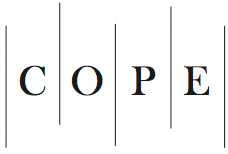About Corrosion and Materials Degradation
Aims and Scope
Corrosion and Materials Degradation (ISSN 2624-5558) an age-old and vexing problem continues to attract research attention, not only because it continues to cost our society very dearly but also for its bearings on application of new and critical technologies. For example, whether it is use of magnesium alloys as novel biodegradable temporary implants, or material for nuclear waste containers, desalination plants or durable electronic devices, corrosion often stands out as a non-trivial challenge. It is true that circumventing corrosion in such critical applications is technologically challenging, socially fulfilling as well as commercially attractive, but it is equally true that a durable solution calls for a disruptive approach, which in itself is a non-trivial challenge (given the age-old nature of the discipline). On the other hand, given the huge economic losses caused by corrosion, the emergence of a new material often triggers an interest in its applicability for corrosion resistance. Most recent examples include ultrathin coatings of graphene and hexa-boron nitride. Corrosion, and science and technology of its mitigation, therefore, is like an antique, old but fascinating.
The proposed journal has the core objective of providing a new platform for dissemination of disruptive and novel approaches to corrosion mitigation for commercially attractive exploitation, whereas promoting also the cutting-edge advancements of the traditional approaches of the discipline.
The journal boasts impressive publications including invited reviews by the topmost corrosion researchers and technologists on the topics of:
- Salient Features of Fundamentals of Corrosion
- Electrochemistry of Corroding Interfaces
- Non-destructive Evaluation of Corrosion
- Corrosion of Body Implants
- Role of Nano- and Microstructure in Corrosion
- Corrosion-assisted Cracking
- Corrosion and Corrosion-assisted Fracture of Aerospace Structures
- Corrosion of Renewable/Modern Energy Systems
- Corrosion of Traditional Energy Systems
- Corrosion of Nuclear Energy Systems
- Corrosion of Light Metals and Alloys
- Corrosion of Weldments
- Corrosion in Petroleum, Oil and Gas Systems
- Corrosion in Water Systems
- Corrosion Prevention and Mitigation
- Corrosion-Barrier Coatings
- Corrosion Modeling and Simulation
- Corrosion of Steel in Concrete
- Corrosion of Metals in Porous Media
- Corrosion of Additively Manufactured Materials
- Degradation of Polymers and Ceramics
Background and Invitation
Corrosion of engineering alloys and its mitigation measures continue to cost dearly (~4% of GDP of any developed economy which translates to an annual loss of ~$250b to USA). Traditional approaches, such as use of corrosion resistance alloys and coatings have brought about significant mitigation of the age-old problem of corrosion. Alloys with the highest corrosion resistance perform on the principle of their inherent ability to develop a corrosion resistant surface film of oxide of chromium. However, chloride ions (i.e., abundantly present in sea-water) can disrupt this protective oxide film not only in lesser alloys, but even in the case of the alloys with the highest resistance when the corrosive environment is very aggressive. Hence, the traditional mitigation strategies, such as the one based just on increasing chromium content of alloys, have not always succeeded in providing durable mitigations. However, a durable corrosion resistance is still a non-trivial challenge in some critical applications, such as where highly corrosive solutions are handled (e.g., concentrated chloride solutions in desalination plants), or where corrosion resistance is required for very long durations (e.g., nuclear waste containers) or where corrosion can cause serious health problems (such as by degradation of human implants).
The journal boasts impressive publications including invited reviews by the topmost corrosion researchers and technologists. You are sincerely invited to submit your manuscripts to the journal on the topic of corrosion and its mitigation.
MDPI Publication Ethics Statement
 MDPI is a member of the Committee on Publication Ethics (COPE).
MDPI takes the responsibility to enforce a rigorous peer-review together with strict ethical policies and standards to ensure to add
high quality scientific works to the field of scholarly publication. Unfortunately, cases of plagiarism, data falsification, inappropriate
authorship credit, and the like, do arise. MDPI takes such publishing ethics issues very seriously and our editors are trained to proceed in
such cases with a zero tolerance policy. To verify the originality of content submitted to our journals, we use iThenticate to check submissions against previous publications.
MDPI is a member of the Committee on Publication Ethics (COPE).
MDPI takes the responsibility to enforce a rigorous peer-review together with strict ethical policies and standards to ensure to add
high quality scientific works to the field of scholarly publication. Unfortunately, cases of plagiarism, data falsification, inappropriate
authorship credit, and the like, do arise. MDPI takes such publishing ethics issues very seriously and our editors are trained to proceed in
such cases with a zero tolerance policy. To verify the originality of content submitted to our journals, we use iThenticate to check submissions against previous publications.
Book Reviews
Authors and publishers are encouraged to send review copies of their recent related books to the following address. Received books will be listed as Books Received within the journal's News & Announcements section.
MDPI
St. Alban-Anlage 66
CH-4052 Basel
Switzerland
Copyright / Open Access
Articles published in CMD will be Open-Access articles distributed under the terms and conditions of the Creative Commons Attribution License (CC BY). The copyright is retained by the author(s). MDPI will insert the following note at the end of the published text:
Reprints may be ordered. Please contact for more information on how to order reprints. Announcements regarding academic activities such as conferences are published for free in the News & Announcements section of the journal. Advertisement can be either published or placed on the pertinent website. Contact e-mail address is .Reprints
Announcement and Advertisement
Editorial Office
Contact usFor further MDPI contacts, see here.




